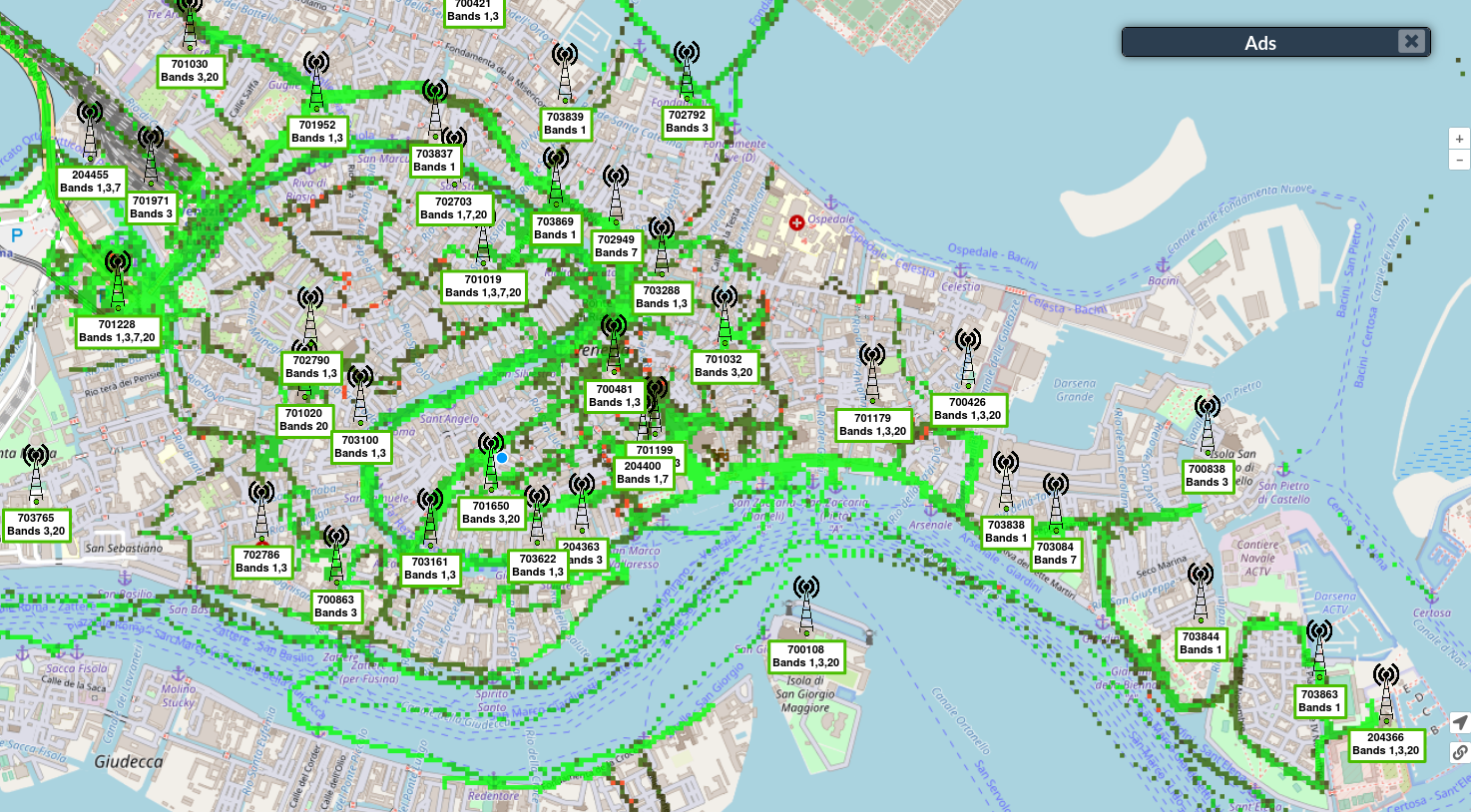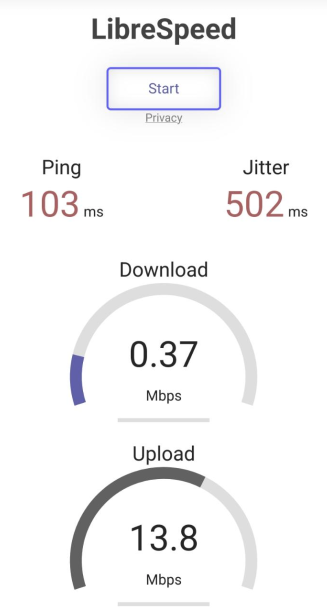
From Vienna, I moved on to Venice and since I stayed for some days, I could also take some time to have a closer look at how the 4G/5G networks perform in this city. Venice is obviously quite a special place and the first thing I noticed from a network point of view is that there are very very few cellular antennas visible in the city. Cellmapper shows the locations of the cell sites it knows and from their distance one could assume that things should work quite well. But the reality on site was a rather mixed experience.

While in the city, I could try the networks of Telecom Italia (TIM) and WindTre, while Iliad and Vodafone would deny me access. There are a few cell sites in the city that are equipped with 5G n78 (3.5 GHz) sectors, and TIM has a bandwidth of 80 MHz on that channel in the city. When close to these sites, performance is pretty good, several hundred Mbps can easily be achieved. The majority of sites, however, are not yet n78 enabled and particularly in the very touristic areas near the Rialto bridge and Piazza San Marco, there’s no n78 to be found. Also, there are very few LTE bands on air, and it was not uncommon to only get 2 CA. Some sites are equipped with 3 bands, but particularly in the tourist areas, that helps little. In many places, I could only get speeds of a 2-3 Mbps in the downlink direction at best and perhaps 10-20 Mbps in the uplink direction. Together with a high jitter beyond several hundred of milliseconds, that’s a sure sign of total network overload. Note that October is a rather relaxed tourist time for Venice, which makes me wonder how the network performs in summer. I can imagine and understand that the city perhaps doesn’t want huge antenna installations on rooftops of buildings, but there are other solutions to get the capacity where it is needed.
While WindTre wouldn’t let me use their 5G network (DCNR bit set to 1), I could access TIMs n78 5G network in a few places, but unfortunately had some problems with it. Every now and then, my mobile got stuck when doing a speed test and connectivity was broken for a minute. Perhaps the switch from LTE to 5G ENDC and back does not work every time? Very hard to tell without a tracer (which I didn’t have with me) and very hard to see from the inside of the network. So if somebody from TIM is reading this, send someone on site to check this out.
From a coverage point of view, I found LTE pretty much everywhere in the city, even in very narrow alleys which is definitely a plus from a basic reachability point of view. Performance widely varied, however, and I could get anything from 2-3 Mbps to 20-30 Mbps in different places in the city. So even the top speeds are far below from other, perhaps somewhat more spacious and conventional cities.
Also, Venice airport is a bit strange. While there was great coverage on level 1 in the middle of the terminal with speeds of 100+ Mbps and 4 CA, both TIM and WindTre are down to a single signal bar on the far sides of the terminal, particularly on level 0 with a restaurant and seating. An an RSRP of -120 dBm for band 20 (800 MHz) resulted in 2 Mbps downlink and half an Mbps in the uplink direction. At the airport! Seriously? I’m a bit disappointed, even a medium sized airport such as the one in Venice deserves a better RF distribution system. In the past, Italy was the land of mobile plenty. They had the latest technology early and lots of it, and people were crazy about mobiles. Two decades and many network consolidations later, little remains of that spirit of back then, at least not in Venice.
But to close with a positive note, there’s also some good news in Venice when it comes to Internet access: Apart from the water, fibers spring out of the ground everywhere! The city must be a fiber bonanza! And indeed, at the place I stayed, Internet connectivity over Wifi was excellent, and instead of using the mobile network as I usually do when I travel, I resorted to using the Wi-Fi while I was there.